[103rd Cruise Report]Hobart (Tasmania) – Learning about nature conservation and walking through primary forests (Part Two)
Jan.24th
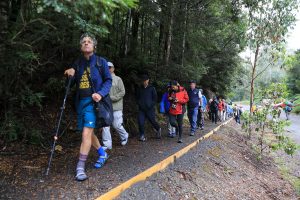
Arriving to the entrance of the protected forest area, David guided us on our walk through the primary growth forest.
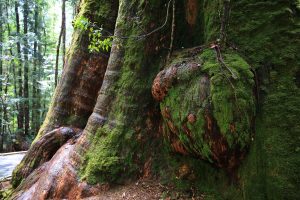
Everything in the forest was a new and amazing experience, with a true feel of stretching back in time to the ancient Gondwana land.

With deep greens

The very feel of the air
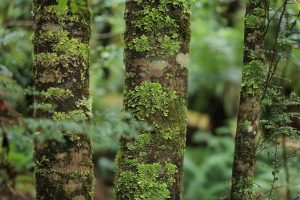
A rainforest in the truest sense
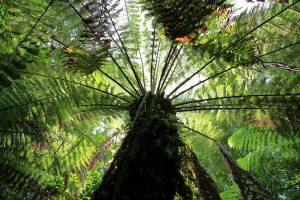
And amongst all this were the jaw-dropping giant trees!
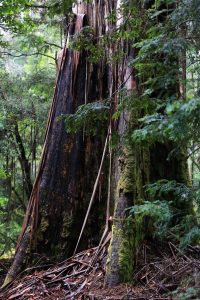
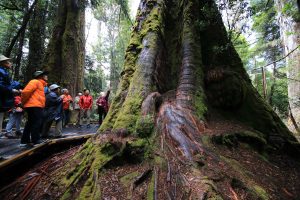
Rows of gigantic several hundred year-old trees.

These are eucalyptus trees, and so that they can grow so tall, the bark is stripped from higher sections of the trunk by the wind, giving them their unique shape. Their windswept form is unusual but impressive, and some of the rees are up to 450 years old.
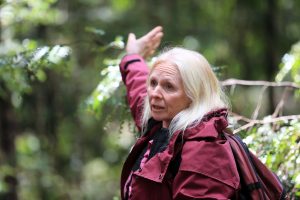
Here we were joined by another staff member from WST, Cathy, who told us the story of Peg who played an important role in some of the early anti-logging protests. Peg spent 51 days living up in the trees in order to protect them, and garnered a lot of media attention, playing a big role in protecting the forest.
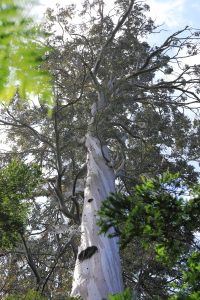
We truly felt that World Heritage Sites are made up of and protected by the activities of these kinds of people. Cathy added that “there is nothing wasted in this forest. All the trees and plants and living things coexist in harmony, and all serve each other”.
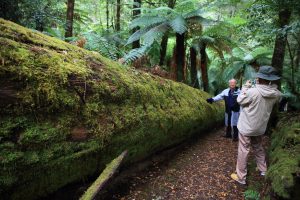
Each of these massive trees so big that they dwarf humans all serve a role for the other plants of the forest.
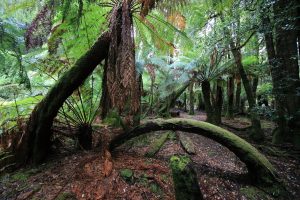
Trees that have fallen to the forest floor are replaced by new trees and rise again, giving the forest a truly unique atmosphere.
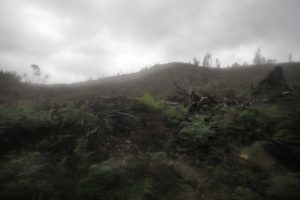
It was painful to think that this beautiful primary growth forest, so abundant in nature, could become just like the logging site we had seen earlier.

On the bus on the way back to the port, we asked David if it was possible for there to be sustainable logging. He told us “there’s not one answer for everywhere in the world about what’s sustainable. For starters you can recycle and reduce the amount of wood you use, as well as knowing where the wood you use has come from. Firstly starting with basic things like this. From there, you can have clearly defined logging areas, and make sure there are clearly visible criteria. For example, no logging in an area with endangered species, and be clear the extent of the damage that will result from the logging. It’s also important to make sure the community is involved and the mindset of protecting the forests in widespread. There are many different choices, but the thing we need to keep in mind the most is not just the pursuit of profits and cheap prices, but longterm societal, environmental, and economic impacts. Having a balanced, ecological approach to logging is possible I think.”
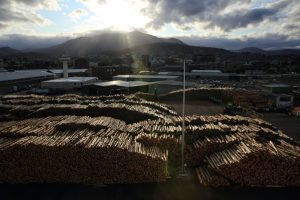
Tasmania is located far away, but this land is closely linked to the paper industry in Asia, something which plays an important role in our daily lives. It was a day for all of us to once again think about how to have a sustainable society here, and how to make this a reality in all societies.
